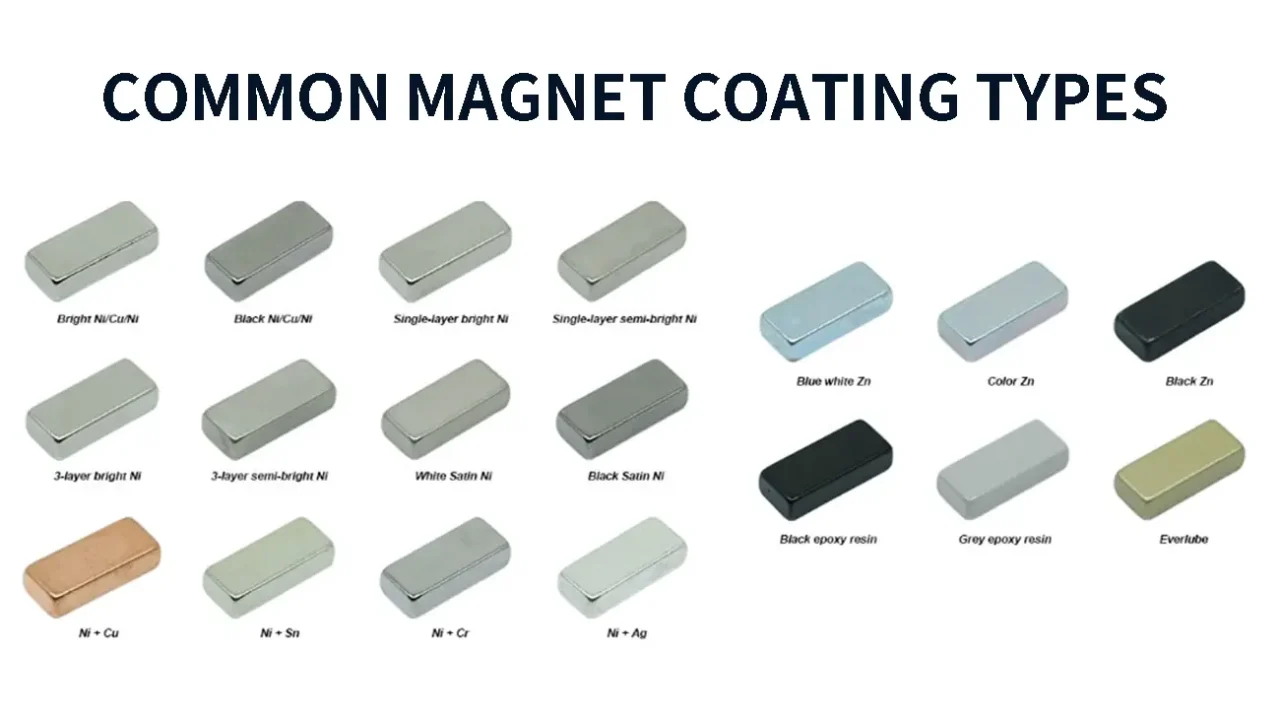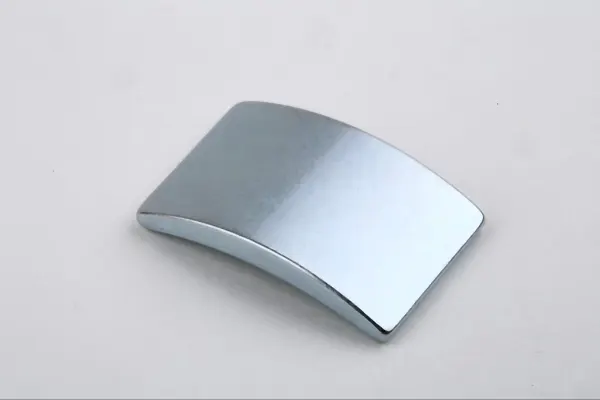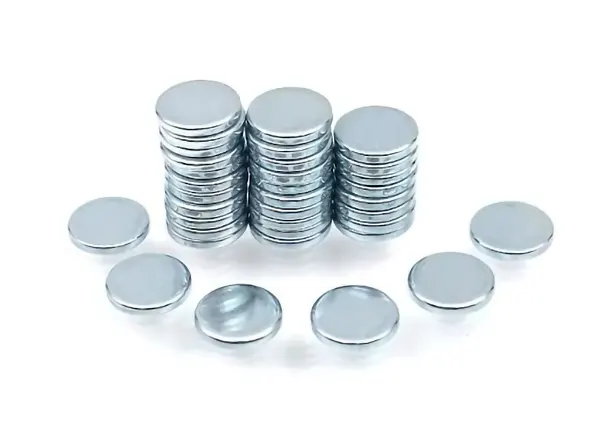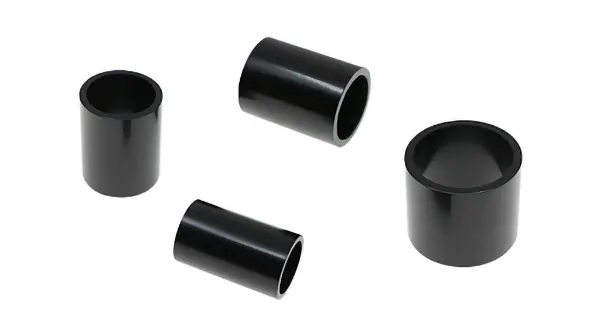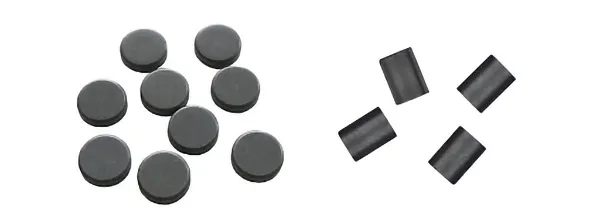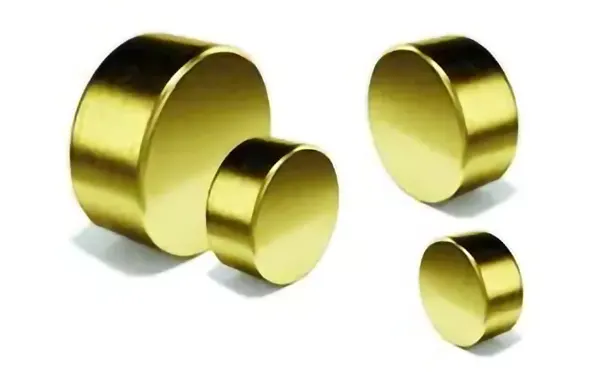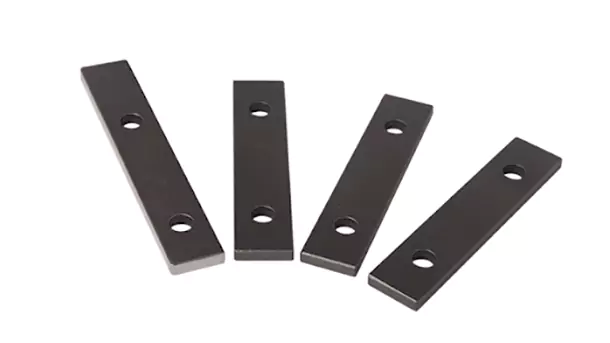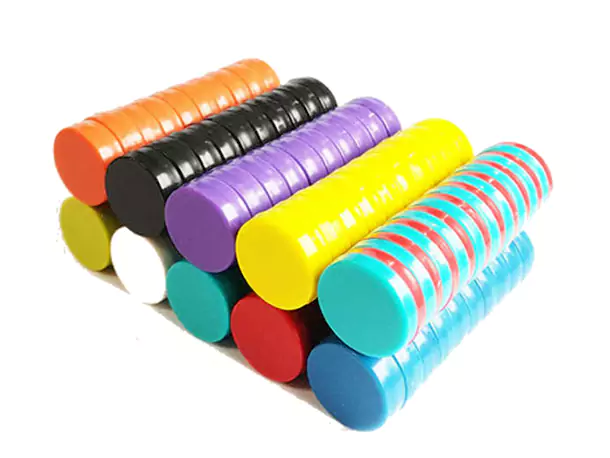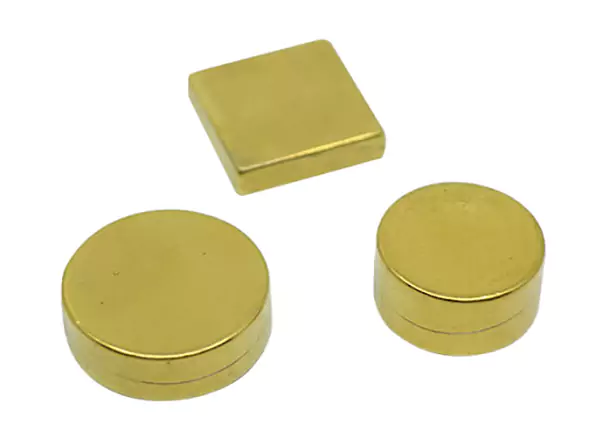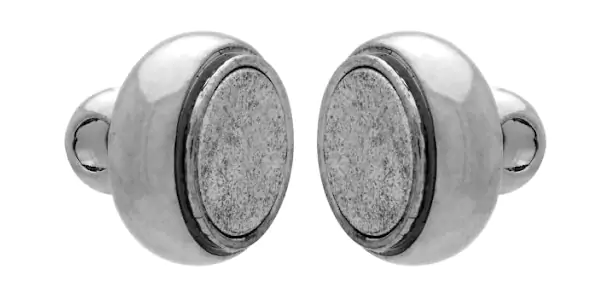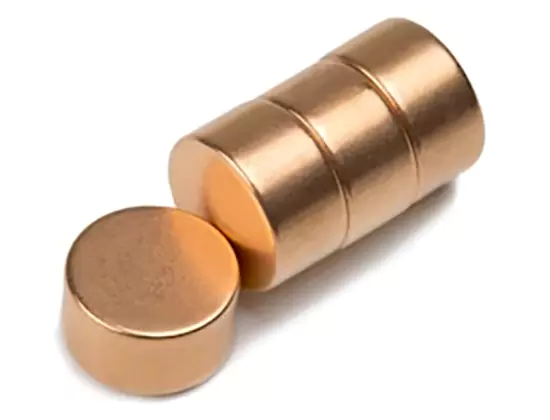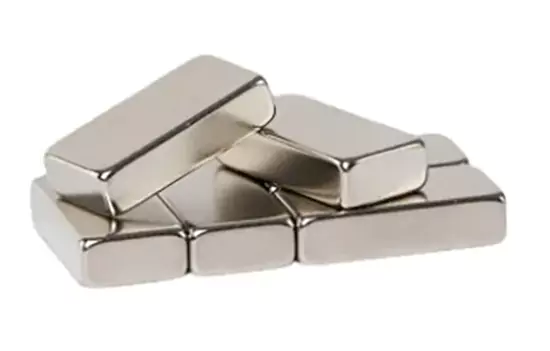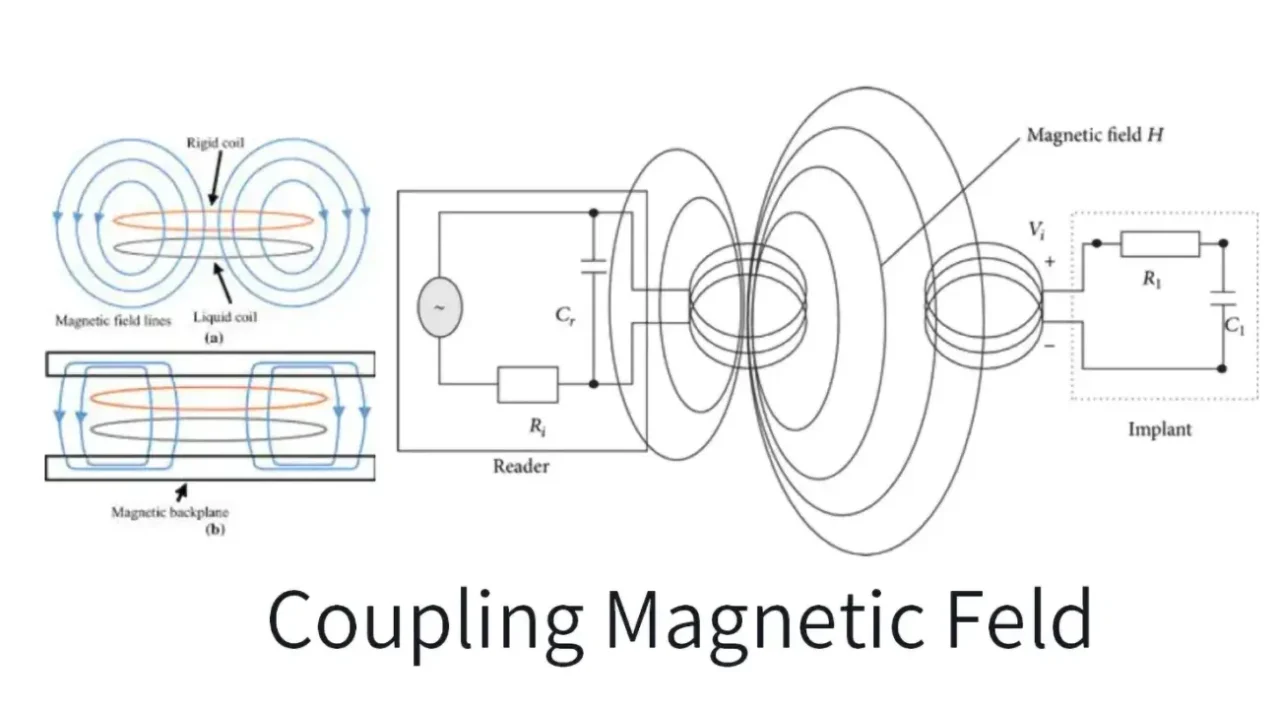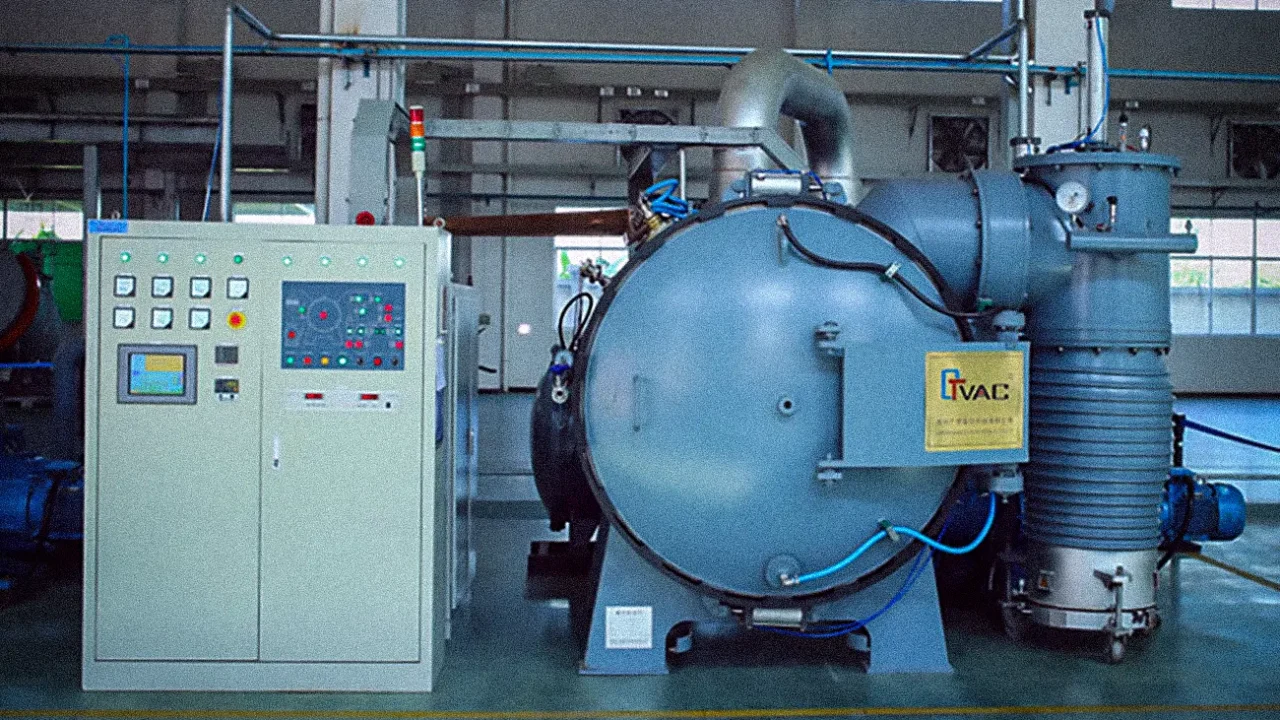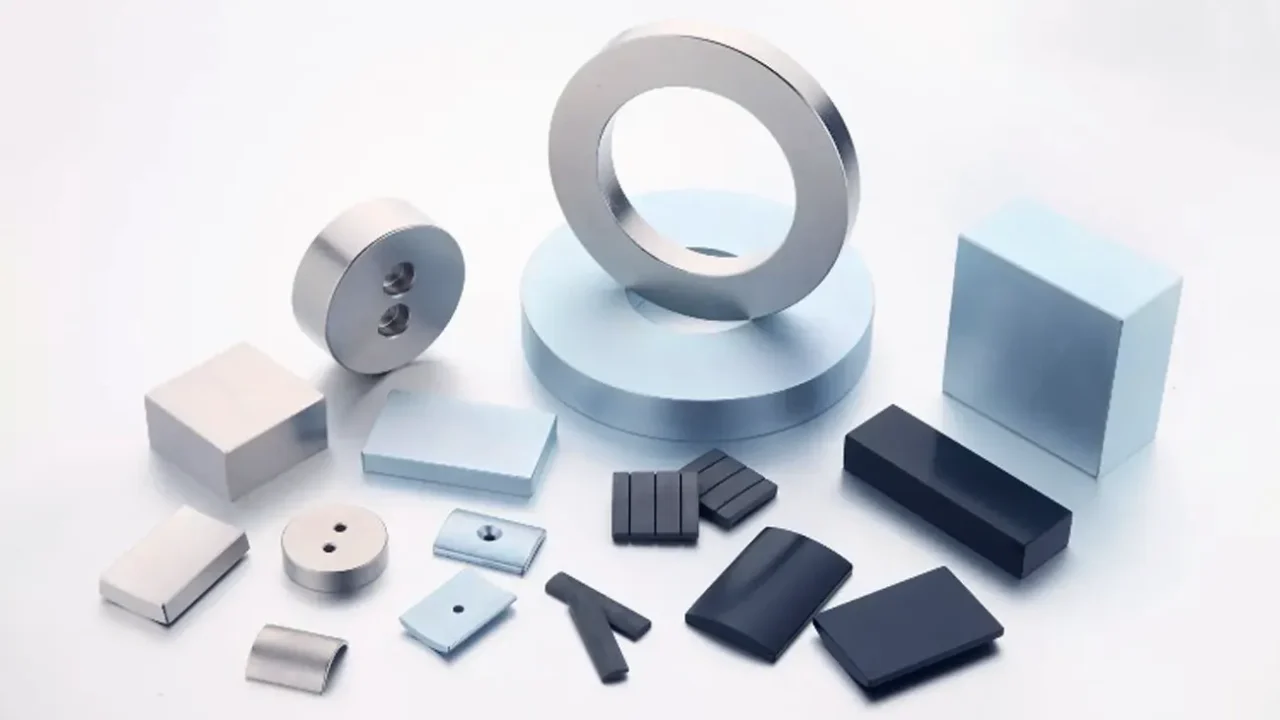Magnets are used in many industries from electronics to healthcare to renewable energy to manufacturing. But although the magnetic core is the heart of the application, the coating or plating on the magnet is what makes it durable and perform at its best. The coating on a magnet is more than just a protective layer; it increases corrosion resistance, durability and often provides aesthetic or functional benefits.
Our guide today will go into the world of magnet coatings and platings, we will look at the different types, their characteristics and the surface treatment methods. Whether you are a professional sourcing expert for industrial applications or just an interested hobbyist, understanding the importance of coatings will help you make informed decisions for your projects. From simple coatings like nickel and zinc to complex multi layered options we will go through the characteristics, benefits and real world uses of these coatings.
What Are The Surface Treatment Processes For Magnets?
Each metal coating has its advantages. Nickel plating is durable and has a shiny finish, perfect for applications that require both protection and appearance. Zinc coatings are economical for rust prevention, gold plating is for high-precision electronic components. Each coating is chosen based on the environmental and functional requirements of the magnet.
While electroplating has many benefits it requires great control and expertise. The process demands precise electrical parameters, solution composition and application techniques for uniform coverage. Environmental factors, current density and solution temperature need to be managed to get the best results. In some harsh environments with high abrasion or extreme conditions the coating may wear off and may need to be maintained or re-applied periodically.
Spraying:
Spraying is a dynamic and flexible magnet surface treatment process that allows manufacturers to apply different coating materials onto magnets using high pressure equipment. This process converts coating materials into fine uniform particles that stick to the surface of the magnet and creates protective and functional layers with great efficiency.
The principle of spraying is to atomize coating materials which can be polymers and paints to specialized materials like PTFE into tiny particles. These particles are then propelled onto the surface of the magnet using different methods like air spraying, thermal spraying or powder coating. Each method has its own advantages so manufacturers can choose the right method based on the coating material and desired outcome.
Different spray coating materials on magnets have different advantages. Epoxy resin coatings create tough corrosion resistant layers that protect the magnets in harsh environments. Rubber coated magnets improve grip and impact resistance perfect for industrial or mechanical applications. Plastic coatings provide lightweight protection and improve appearance, showing the versatility of the process.
But spraying is not without limitations. To get a perfect uniform coating requires great skill and precise equipment. Inconsistent application technique can result in uneven layers that can compromise the performance and protection of the magnet. And the adhesion achieved through spraying may not be the same as the molecular bond created by magnet electroplating or advanced vapor deposition processes.
Spraying depends on many factors such as spray gun configuration, particle size, material viscosity and application technique. Skilled technicians must calibrate the equipment and maintain consistent motion to get the best coverage. While it’s flexible it requires great expertise to produce high quality and reliable coatings that meet industrial standards.
Physical Vapor Deposition (PVD):
Physical Vapor Deposition is an advanced magnet surface treatment technology that transforms magnet surface through a complex and precise process within a controlled vacuum environment. This process converts coating material into a vapor state which then condenses onto the surface of the magnet and creates a very thin and uniform layer with high precision and quality. It surpasses traditional coating methods by allowing deposition of material with high accuracy and minimal material waste.
The principle of PVD is based on advanced physical transformation. Manufacturers can vaporize coating materials through different methods such as thermal heating, plasma arc generation or targeted ion bombardment. These methods allow the solid material to be converted into a vapor state that can be controlled and deposited onto the surface of the magnet. The vacuum environment is critical in eliminating contamination and getting an immaculate and high quality coating with high uniformity.
Titanium and aluminium coatings are examples of PVD’s capabilities. Titanium based coatings provide light weight durability perfect for aerospace and high performance engineering applications. Aluminium coatings provide corrosion resistance and thermal protection that extends the life of magnets in harsh environments. The resulting coatings show great hardness, wear resistance and aesthetic quality that surpasses traditional magnet surface treatment methods.
Despite its capabilities PVD has its limitations. The equipment required for this process is expensive and not accessible to a cost conscious manufacturing environment. The need for a vacuum chamber and advanced vaporization technology adds to the complexity and cost of the coating process. Hence PVD is usually reserved for high end applications where performance and quality outweighs the cost.
Chemical Vapor Deposition (CVD):
Chemical Vapor Deposition (CVD) is an advanced magnet surface treatment technique that enhances magnet coatings by using complex chemical reactions to create uniform and highly adherent layers on the surface of magnets. This process transforms gaseous compounds through controlled thermal and chemical reactions to form solid coatings with molecular level precision and exceptional functional properties tailored for magnetic materials.
The CVD process takes place in a high temperature chamber where reactive gases are introduced and controlled. These gases decompose or react directly on the surface of the magnet and form a solid coating through molecular level transformation. The high temperature environment ensures optimal chemical reaction and creates magnet coatings with excellent structural integrity, durability and performance.
Examples of magnet coatings achieved through CVD are teflon, Parylene and polyimide coatings. Parylene coatings are highly valued for its corrosion resistance and chemical stability and are perfect for magnets used in medical, electronics and aerospace industries. Polyimide coatings provide high temperature performance and electrical insulation properties and address the critical requirement for magnets used in high tech applications. These coatings show the molecular level protection that CVD can offer that enhances the fundamental properties of magnets.
But Chemical Vapor Deposition has its challenges. The process is complex and time consuming, requires sophisticated equipment, precise temperature control and deep understanding of chemical reactions. Hence CVD is suitable for specialized high end applications where traditional coating methods are not enough. Manufacturers must evaluate specific performance requirements and cost before using this advanced surface treatment for magnet coatings.
These coating technologies are the ultimate surface engineering, giving manufacturers the opportunity to enhance magnet performance, durability and functionality through molecular level transformation. Each method has its advantages and limitations, to be chosen based on specific application requirements, cost and performance characteristics.
What Types of Magnet Coatings are there?
Magnet coatings are key to performance, durability and versatility of magnets. Different coatings serve different purposes, corrosion protection, adhesion or visual appeal. The choice of coating depends on the application and environmental conditions the magnet will be in. Here are some of the most common types of magnet coatings and their characteristics and uses:
Nickel Coating:
Nickel coating is the most advanced and versatile magnetic surface treatment technology, it offers an unbeatable combination of functional protection and visual appeal. The molecular engineering behind nickel coating creates a transformative protective layer that boosts magnetic component performance across multiple key dimensions.
The multiple nickel coating options, chemical nickel, single layer nickel, matte nickel and black nickel give manufacturers an unparalleled toolset to address complex performance requirements. Chemical nickel options ensure molecular level uniformity, single layer options offer streamlined protection. Matte and black nickel options offer specialized aesthetic and functional customization, showing remarkable engineering flexibility.
Neodymium magnets benefit the most from neodymium magnet nickel coating, they have improved durability and environmental resistance. The coating creates a smooth hard surface that provides full protection against oxidation, mechanical stress and environmental contamination. Electronics, motor manufacturing and decorative industries rely heavily on nickel coated magnets, for their exceptional performance.
Zinc Coating:
Zinc coating is a practical and economical magnetic surface protection solution, it offers manufacturers a cost effective way to rust prevention and environmental shielding. This coating is a balance between performance and cost, making it very attractive for industrial applications with budget constraints.
The colourful zinc and blue-white zinc options offer more flexibility to address specific protection requirements. The principle of zinc coating is to create a sacrificial protective layer that corrodes first, extends the life of the magnet and has moderate corrosion resistance.
Industrial manufacturers choose zinc coating due to its economic benefits. The matte finish and low cost protection makes it a solution for large industrial applications where cost is the top priority. Machinery components and general industrial equipment use zinc coated magnets to balance performance and cost.
Chrome Coating:
Coating Chrome coating is the ultimate magnetic surface treatment, it combines mechanical durability, visual appeal and precision engineering. This advanced coating process electroplates magnetic surfaces to create a high gloss finish with high hardness and reflectivity. The molecular structure of chrome coating provides wear resistance, an extremely hard surface that can withstand mechanical stress. The bright metallic finish looks great and creates a barrier against the environment. Precision machinery, automotive parts and high end decorative items benefit most from chrome’s properties. The coating creates a uniform reflective surface that’s perfect for applications that require both mechanical protection and visual appeal.
Epoxy Resin Coating:
Epoxy resin coating is an advanced surface treatment that turns magnetic materials into extremely tough components that can withstand extreme environmental conditions. This coating goes beyond protection, creating a molecular barrier that shields magnets from moisture, chemical exposure and mechanical stress. The black epoxy and grey epoxy options give manufacturers more flexibility to address specific environmental and aesthetic requirements. The molecular structure of an epoxy coating magnet creates a protective layer that has excellent chemical and corrosion resistance. Applied through precise spraying, these coatings create a smooth uniform surface that bonds with the magnetic material. Epoxy coating magnets are tough enough for outdoor applications and marine environments where harsh conditions are unavoidable. Industrial applications, marine equipment and environmental monitoring systems use epoxy coated magnets to ensure long life and reliability. The spray application process allows great precision and consistency, and manufacturers can create a protective layer that fits perfectly to the magnet’s complex geometries. The coating creates a seamless barrier against moisture and chemical contamination that extends operational life and maintains magnetic performance. Black and grey options give engineers more flexibility to choose coatings that match the design requirements or environmental context.
Rubber Coating:
Rubber coating is a magnetic surface treatment that goes beyond traditional protection methods, combining mechanical shock absorption, tactile enhancement and aesthetic customization. This coating turns magnets into versatile parts that deliver protection and user friendliness. With multiple color options including black, white, gray and red manufacturers have never had more design freedom.
The purpose of rubber coating is to create a protective layer that absorbs mechanical shock while also increasing grip and usability. Consumer products, toys and industrial tools benefit greatly from this coating’s ability to create a soft impact resistant surface. The molecular structure of rubber coated magnets allows for significant deformation without compromising the underlying magnetic properties making them perfect for applications that require protection and dynamic performance.
The color options of rubber coatings allow designers to create magnets that are visually appealing and functionally advanced. The ability to choose from multiple colors means brand alignment, aesthetic customization and improved user interaction. Beyond the visual appeal the coating provides a tactile surface that increases grip, reduces slippage and improves overall product ergonomics. This multi faceted approach to magnetic surface treatment is a sophisticated solution to both technical and user experience requirements.
Parylene:
Parylene has changed the game for magnet protection, an ultra thin protective layer is critical for high performance magnetic components. This specialized coating is particularly valuable for rare earth magnets and precision magnetic sensors where maintaining magnetic field strength while protecting the environment is key.
When applied to magnetic assemblies Parylene creates a molecular level barrier that prevents oxidation and corrosion without affecting the air gap between the magnetic components. This is critical in applications like hard disk drives, magnetic sensors and precision instruments where even microscopic changes in magnetic field interaction can impact performance.
The coating’s conformability makes it perfect for complex magnetic shapes and assemblies, particularly in medical magnetic devices and aerospace magnetic components where reliability is key. Unlike traditional coatings Parylene’s ultra thin layer maintains the original magnetic flux density while providing superior protection against harsh environments. This makes it ideal for magnetic devices in tough conditions, from underwater sensors to aerospace applications.
Gold (Au) Coating:
Gold coating is a high end solution for high performance magnetic components where both electrical conductivity and magnetic field preservation is critical. This premium coating is designed for magnetic sensors, reed switches and precision magnetic instruments where signal integrity is key. The coating’s molecular structure is engineered to maintain optimal magnetic flux while providing protection.
When applied to magnetic components gold coating creates a very thin conductive layer that doesn’t affect the magnetic air gap. This is critical in magnetic reed switches and relays where precise magnetic field interaction is required. The coating’s high conductivity and corrosion resistance makes it perfect for magnetic contacts in harsh environments, particularly in aerospace and medical magnetic devices.
Gold being non magnetic makes it ideal for coating magnetic cores and precision magnetic sensors where exact magnetic properties are critical. Its oxidation resistance ensures long term stability of magnetic components in harsh applications, from satellite systems to high end medical magnetic imaging equipment.
Silver (Ag) Coating:
Silver coating is a cost effective solution for magnetic components where excellent electrical conductivity without compromising magnetic field strength is required. This coating is designed for magnetic sensors, switches and assemblies where precise magnetic properties while ensuring electrical contact is key.
In magnetic applications silver coating provides the perfect balance of conductivity and magnetic field preservation. The thin uniform layer has minimal impact on magnetic flux density and excellent electrical properties. This makes it ideal for magnetic reed switches, electromagnetic sensors and magnetic control devices where reliable electrical contact is critical.
The coating’s performance in magnetic applications extends to both permanent magnets and electromagnetic cores where it provides protection against oxidation while maintaining magnetic performance. Its cost effectiveness makes it popular for high volume magnetic component production in consumer electronics and industrial automation.
PTFE (Teflon) Coating:
PTFE coating is a must have in specialized magnetic applications where chemical resistance and non-stick is critical and magnetic field strength is maintained. This coating is great for magnets used in chemical processing, laboratory equipment and aggressive industrial environments where other coatings would fail.
The coating is perfect for magnetic separators and magnetic stirrers in chemical labs where strong magnetic fields and corrosive chemicals require extra protection. When applied to permanent magnets or electromagnetic components PTFE creates a barrier that preserves magnetic properties and prevents chemical attack and material buildup.
In magnetic filtration systems and chemical processing equipment PTFE coated magnets retain their magnetic strength while resisting chemical degradation and preventing particle adhesion. This dual function makes them a must have in applications where magnets need to operate in harsh chemical environments and maintain their magnetic properties.
Polyimide Coating:
Polyimide coating is a new generation of magnetic surface treatment, with extraordinary thermal resistance and electrical insulation. This advanced polymer coating is a high end solution for protecting magnetic components in extreme environments. It can withstand high temperatures while maintaining excellent electrical insulation, making polyimide the preferred choice for aerospace, automotive and advanced electronics where magnet performance is critical.
The molecular structure of polyimide coating creates a tough protective layer that increases the life of magnetic materials, so they can withstand temperatures way beyond what traditional coating can. This thermal stability means magnets can maintain their performance characteristics in harsh environments. Advanced electronics, aerospace systems and specialized industrial equipment use polyimide to enhance the reliability and functionality of magnetic components in tough conditions.
The electrical insulation properties of polyimide coating complements its thermal resistance, a complete protection strategy that protects the magnets. By creating a thin uniform layer that preserves the magnetic properties while delivering extreme environmental protection, polyimide coating is the engineering solution for performance and life of magnetic applications in many industries.
Plastic Coatings:
In addition to advanced coatings like polyimide, spray applied plastic coatings are a common solution for protecting permanent magnets. These coatings are a cost effective and versatile way to protect magnets in many applications. Not as thermally resistant as polyimide, plastic coatings offer corrosion resistance, improved durability and smooth surface finish.
Plastic coatings are good in environments where mechanical wear, moisture or mild chemical exposure can degrade bare magnets. The ability to spray apply these coatings ensures uniform coverage even on complex geometries making them a practical solution for automotive, consumer electronics and general industrial use.
Plastic coatings add an extra layer of protection for magnetic properties and life of the component. With other advanced coatings they form a complete solution for performance and reliability of magnetic systems.
Specialty Coatings:
Specialty coatings are advanced surface treatments applied to magnets to meet specific functional and environmental requirements beyond conventional coatings. These coatings use specialized materials or processes to improve performance, durability and usability of magnets in tough applications. Below are examples of specialty coatings for magnets and their benefits:
Titanium (Ti):
Titanium coatings are light weight and extremely strong, offer excellent corrosion resistance, wear and high temperature resistance. These properties make titanium coated magnets suitable for harsh environments like aerospace or marine applications where durability and performance is critical. Also biocompatibility extends its use to medical grade magnets in implants and surgical tools.
Rhodium:
Rhodium coatings give magnets an ultra bright, reflective finish and excellent tarnish and corrosion resistance. These properties are valuable for magnets used in high end decorative products, electronic components or precision optical systems to ensure long term protection and aesthetics.
Copper (Cu):
Copper coatings improve electrical and thermal conductivity of magnets, making them suitable for applications like electric motors, generators and transformers. In multi-coating systems, copper layers can improve overall magnet performance. Also copper coated magnets are useful in medical environments due to its natural antimicrobial properties.
Chrome Alloy:
Chrome alloy coatings give magnets a tough wear resistant surface by combining the durability of chromium with other elements. This type of coating is ideal for mechanical applications where magnets are exposed to high temperatures, abrasive conditions or heavy loads to ensure long term reliability.
Phosphating:
Phosphating creates a chemical bond on magnet surfaces that improves corrosion resistance, reduces friction and prepares the surface for further treatments such as painting or bonding. Used in the automotive and machinery industry, phosphated magnets last longer and perform better in tough operating conditions.
Others.
Parylene C:
Parylene C is a special coating for its excellent chemical resistance and dielectric properties, perfect for magnets used in electronics and medical devices. It forms a uniform, pinhole free barrier that gives unmatched protection to magnets in harsh environments such as chemical processing and high humidity.
Everlube:
Everlube is a thermosetting coating that combines PTFE, MoS₂ and phenolic resin. This composite coating has excellent wear resistance and low friction performance, perfect for high performance magnets in aerospace, defense and other critical applications where reliability and durability matters.
Sn (Tin):
Tin coatings offer excellent corrosion resistance and solderability, useful for magnets in electronic applications. Tin coated magnets are useful in environments where reliable electrical connections and long term stability is required.
Nano Al (Nano Aluminum):
Nano aluminum coatings use advanced nanotechnology to improve magnet performance by giving protection against oxidation and corrosion. These ultra thin, high performance coatings also improve thermal and electrical conductivity, ideal for high end applications in electronics, renewable energy systems and aerospace.
| Comparison of Different Magnet Coatings | |||
|---|---|---|---|
| Coating Name | Abbreviation | Characteristics | Application Directions |
| Nickel Coating | Ni | Versatile, durable, corrosion-resistant, and offers aesthetic finishes (matte, black, etc.) | Electronics, motor manufacturing, decorative industries, neodymium magnets coatings |
| Zinc Coating | Zn | Economical, sacrificial corrosion protection, moderate resistance | Industrial applications, machinery, general industrial equipment |
| Chrome Coating | Cr | Highly durable, wear-resistant, and provides a reflective finish | Precision machinery, automotive components, high-end decorative elements |
| Epoxy Resin Coating | – | Provides excellent chemical and corrosion resistance, protects against mechanical stress and moisture | Outdoor applications and marine environments, industrial applications, environmental monitoring systems |
| Rubber Coating | – | Shock-absorbing, enhances grip, available in multiple colors | Consumer products, toys, specialized industrial tools, user-friendly applications |
| Parylene Coating | – | Ultra-thin, provides excellent environmental protection without affecting magnetic properties | High-performance magnetic components, rare earth magnets, precision magnetic sensors, medical, aerospace applications |
| Gold Coating | Au | Superior electrical conductivity, maintains magnetic properties, resistant to corrosion | Magnetic sensors, reed switches, aerospace, medical magnetic devices |
| Silver Coating | Ag | Excellent electrical conductivity, minimal impact on magnetic flux, corrosion-resistant | Magnetic reed switches, electromagnetic sensors, consumer electronics, industrial automation |
| PTFE (Teflon) Coating | PTFE | Chemical resistance, non-stick, preserves magnetic properties | Chemical processing, laboratory equipment, magnetic separators, magnetic stirrers |
| Polyimide Coating | – | Thermal resistance, electrical insulation, withstands high temperatures | Aerospace, automotive, advanced electronics, high-temperature environments |
| Spray-Applied Plastic Coating | – | Corrosion resistance, cost-effective, smooth surface finish | Automotive, consumer electronics, industrial applications, providing additional protection |
| Titanium Coating | Ti | Lightweight, strong, corrosion-resistant, wear-resistant, high-temperature resistant | Aerospace, marine, medical-grade magnets in implants and surgical tools |
| Rhodium Coating | – | Reflective, tarnish-resistant, corrosion-resistant, provides aesthetic and functional benefits | High-end decorative products, electronic components, precision optical systems |
| Copper Coating | Cu | Enhances electrical and thermal conductivity, antimicrobial properties | Electric motors, generators, transformers, medical environments |
| Nano Aluminum Coating | Nano Al | Advanced nanotechnology, superior oxidation and corrosion protection, enhances conductivity | Aerospace, electronics, renewable energy systems, cutting-edge applications |
| Chrome Alloy Coating | – | Durable, wear-resistant, robust surface | Mechanical applications, exposed to high temperatures, abrasive conditions |
| Phosphating | – | Chemically bonded layer, enhances corrosion resistance, reduces friction | Automotive, machinery industries, long-term performance under challenging conditions |
| Parylene C | – | Superior chemical resistance, dielectric properties, uniform, pinhole-free barrier | Electronics, medical devices, harsh environments (chemical processing, high-humidity) |
| Everlube Coating | – | Composite of PTFE, MoS₂, and phenolic resin, wear-resistant, low-friction properties | Aerospace, defense, critical industries |
| Tin Coating | Sn | Excellent corrosion resistance and solderability | Electronic applications, reliable electrical connections |
| Nano Aluminum Coating | Nano Al | Advanced nanotechnology, oxidation and corrosion protection, improves conductivity | Electronics, renewable energy systems, aerospace technologies |
We support different coating solutions such as zinc coating, chrome coating, nickel coating, epoxy, PTFE (Teflon), etc. Each coating method provides a unique combination of protection, performance enhancement and specialized features, enabling the development of increasingly advanced magnetic solutions. When choosing the right coating, we will consider the actual use needs of our customers and guide customers to choose the best magnet coating to maximize the life and reliability of magnetic components.
In addition to coatings, we also provide customized types of magnets to meet different industry needs. Whether you need neodymium iron boron (NdFeB), samarium cobalt (SmCo) or alnico magnets, we will ensure that the right material is selected for optimal performance. The size and shape of the magnets can also be customized, including discs, rings, blocks, cylinders or custom geometries to make them suitable for specific design requirements. The magnetization direction, axial, radial or multi-pole can also be customized to meet your project requirements.
Oscenmag combines advanced coating options, customized shapes and sizes, and performance optimization to provide fully functional and reliable and durable magnets to ensure the success of your application.
Common Types Of Multi-Layer Coating Combinations In High-Performance Magnets.
Multi layer coatings for magnets combine the best of different materials to improve magnet performance. These coatings are designed to use the strengths of each layer to meet different needs in the magnet industry. Here are some common multi layer magnet coating configurations and their uses and benefits:
Nickel + Gold (Ni Au): The Nickel + Gold (Ni Au) layer provides superior safeguarding for high-efficiency magnets through its blend of corrosion resistance and outstanding electrical conductivity. The gold coating guarantees excellent conductivity, whereas the layer of nickel foundation offers strong corrosion resistance. This nickel coating is perfect for magnetic sensors and components in precision devices, where both electrical efficiency and environmental durability are essential.
Nickel + Gold (Ni Au): The Nickel + Gold (Ni Au) layer offers superior protection for high performance magnets with its combination of corrosion resistance and excellent conductivity. The gold coating is great for conductivity, the nickel base is great for corrosion protection. This coating is ideal for magnetic sensors and components in precision devices where both electrical performance and environmental durability are key.
Nickel + Tin (Ni Sn): The Nickel + Tin (Ni Sn) layer is great for corrosion resistance and a smooth surface finish, perfect for magnetic systems in harsh environments. The tin coating adds extra protection against environmental damage so magnets used in industrial and marine applications will last longer.
Nickel + Chrome (Ni Cr): The Nickel + Chrome (Ni Cr) coating is known for its durability and looks. The chrome layer adds surface hardness and a reflective finish, the nickel layer provides base corrosion protection. This coating is used for magnets in industrial machinery and decorative magnetic assemblies where performance and appearance matter.
Nickel + Silver (Ni Ag): The Nickel + Silver (Ni Ag) layer is a balance of corrosion resistance and electrical conductivity. Great for magnetic sensors, switches and electrical assemblies where signal integrity and environmental protection are key. The silver layer is for electrical performance, the nickel base is for structural and magnetic integrity.
Nickel-Copper-Nickel (NiCuNi): The Nickel Ni Cu Ni coating is the industry standard for high performance magnet coatings. This triple layer system is great for durability, flexibility and corrosion resistance. Used in electronic devices, medical instruments and precision motors this coating ensures magnets will perform in demanding applications.
Nickel-Copper-Nickel-Tin (NiCuNiSn): The Nickel-Copper-Nickel-Tin (NiCuNiSn) layer adds a tin layer to the NiCuNi configuration for extra corrosion protection. This 4 layer combination is for magnets in extreme conditions, for maximum protection against environmental challenges and to extend life.
Nickel-Copper-Nickel-Gold (NiCuNiAu): The Nickel-Copper-Nickel-Gold (Ni Cu Ni Au) coating combines multiple layers of nickel, copper and gold for maximum corrosion resistance and conductivity. This advanced coating is for high performance magnetic components in aerospace, medical devices and specialized industrial applications where performance and longevity matter.
Nickel-Copper-Nickel-Silver (NiCuNiAg): The Nickel-Copper-Nickel-Silver (NiCuNiAg) layer is for applications that require high electrical conductivity and anti-corrosion properties. This combination ensures magnets in electronic devices, sensor systems and magnetic assemblies will be durable where performance and environmental protection are key.
Nickel-Copper + Epoxy (NiCu Epoxy): The Nickel-Copper + Epoxy (NiCu Epoxy) coating combines the strength of metal layers with the protection of epoxy. This hybrid coating is for magnets exposed to chemicals, moisture and mechanical stress like those used in industrial, marine and outdoor applications. The epoxy layer ensures long term durability without compromising magnetic properties.
Zinc + Epoxy (Zn Epoxy): The Zinc + Epoxy (Zn Epoxy) coating is a budget friendly option for magnet protection. The zinc layer is sacrificial corrosion protection, the epoxy layer is a barrier against moisture and chemicals. Great for magnets in agricultural machinery, industrial equipment and mild environmental applications.
The development of multi layer magnet coating technologies is the fusion of materials science, nanotechnology and precision engineering. As industrial applications get more complex these coatings will evolve to give more responsive high performance solutions for magnet protection and enhancement in various industries.
Selecting the right coating combination is about environmental exposure, mechanical stress, electrical performance requirements and budget. Each combination is engineered to optimize magnetic components in various technology domains, showcasing the power of materials engineering in the magnet coating industry.
FAQs
What is the best coating for magnets?
The best coating for magnets depends on the application, but nickel-copper-nickel (Ni-Cu-Ni) is the most commonly used coating for neodymium magnets. The application of the nickel-copper-nickel three-layer coating has excellent corrosion resistance, smooth texture, solid adhesion, non-toxicity and elegant appearance.
Can a magnet be electroplated?
Electroplating is a common process to form a metal protective film on the surface of magnets. But all electroplating coatings must be completed in the factory before the magnets are magnetized. Because the heat generated by the electroplating process will demagnetize the magnets.
What are 3 different types of magnets that are commonly used?
There are three types of magnets.
- Permanent magnets do not require any current supply from external sources and the magnetism remains intact.
- Temporary magnets are those which get magnetised only when a magnetic field is placed on them and when the field is removed they lose the magnetism.
- Electromagnets are created by a current flowing through a magnet wire coating wrapped around a coil and can be turned on or off with the assistance of a power supply.
Click here for a more detailed explanation of the types of magnets.
What is the strongest coating for metal?
Ceramic coatings are among the most effective. Because these coatings offer a remarkably solid and corrosion-resistant surface that is hard to wear, scratch, and tear, they are suitable for harsh environments. Ceramic coatings thermal spray or chemically vapor put down, provide excellent thermal conductivity while also being chemically resistant.
What is the process of magnet plating?
Magnet plating is a process that involves adding a protective layer to the surface of a magnet. This layer helps prevent oxidation and corrosion, which is especially important for neodymium magnets that can rust quickly.
